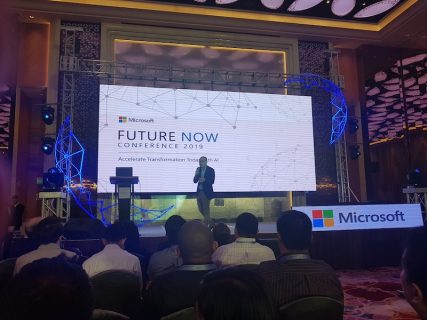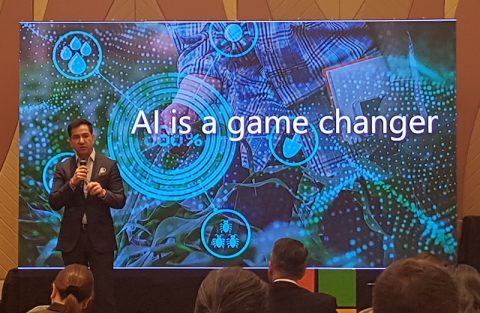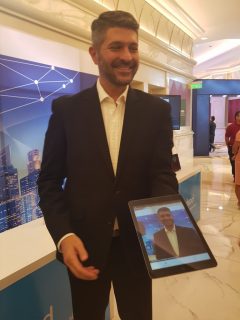by Emily Manuel
Contributor, Eagle News

(Eagle News) – “The future is now,” chanted a group of business and IT leaders who gathered at the Okada Hotel in Manila on March 21, 2019 for Microsoft’s Future Now Artificial Intelligence (AI) Conference.
The results of the Microsoft and International Data Corporation (IDC) study entitled “Future Ready Business: Assessing Asia Pacific’s Growth Potential Through AI” were also unveiled during the said forum.
– What is AI? –
AI is “technology that can perceive, learn, and reason to extend the capabilities of people and organizations”, explains Michael Chang, Director General of Microsoft Research and Development Center.
Its main application is in the areas of speech recognition, image recognition and natural language processing.
– AI as a game-changer –

AI will be the defining technology of our time.
By 2021, digital transformation will add $8B to the Philippine gross domestic product (GDP), and 40% will come from the production of new goods and services.
According to a Microsoft and International Data Corporation (IDC) study entitled “Future Ready Business: Assessing Asia Pacific’s Growth Potential Through AI”, AI will accelerate the rate of innovation in the Philippines by 1.7 times and increase employee productivity by 1.9 times.
AI will almost double the country’s production of new goods and services.
– Philippines not yet ready for AI-
“The Philippines is not yet ready for AI”, says Randy Roberts, IDC Philippines Head of Operations. According to Roberts, “organizations’ leadership should make AI a core part of their strategy and continuously invest in this transformative technology for the long-term success, sometimes without immediate returns.”
Only 45% of organizations in the Philippines have started their AI journey, with 35% starting to experiment and 10% adopting AI as a core part of their strategy. The remaining 55% have either not started or are waiting for AI to advance.
The Philippines is also behind AI leaders in the Asia Pacific region, with the widest gaps in investments and data. AI leaders in the region invest in AI 5.4 times more than the Philippines.
– AI will augment, not displace jobs –
Jek Hermida, Microsoft Philippines Solutions Specialist, says AI will help employees do existing jobs better and reduce repetitive tasks. Only 5% of employees surveyed believe that AI will replace jobs.
However, organizations will need to skill or reskill. The demand and supply of skills in the Philippines is disproportionate, with demand in scientific research and development, digital, and quantitative, analytic and statistical skills higher than supply.
Microsoft introduced a new platform on AI education called the “AI Business School”. It’s a free, on-demand, online master class series of case studies, instructional videos, and tools available on the Microsoft website.
-AI as solution to major challenges-
Microsoft Asia Pacific President Andres Della Mattea related how AI helps solve the world’s major challenges. She shares how in Bangalore, where access to water is a problem, AI technology is used to identify where water loss occurs in the distribution chain. In Norway, what was once a hazardous job for humans has been augmented with AI. Drones are now being used to inspect electrical lines and poles to look for faults.
In the Philippines, students from the University of San Carlos and winners of Microsoft’s Imagine Cup created the “Aqua Check” app. Using Microsoft technology, the app can determine if water is contaminated, using only a photo of a water sample taken through a microscope.
– Other AI applications –

The “Seeing the AI App” is a free mobile app that helps the visually impaired “see” by describing images and narrating text. It can detect the gender, age, and emotional expression of a person, read text, and describe colors, shapes and images.
“Sota”, a robot developed by NTT Technologies, helps the elderly and sick by monitoring their vitals and reminding them to take their medicines. Equipped with natural language processing, it’s able to understand what the patient is saying.








